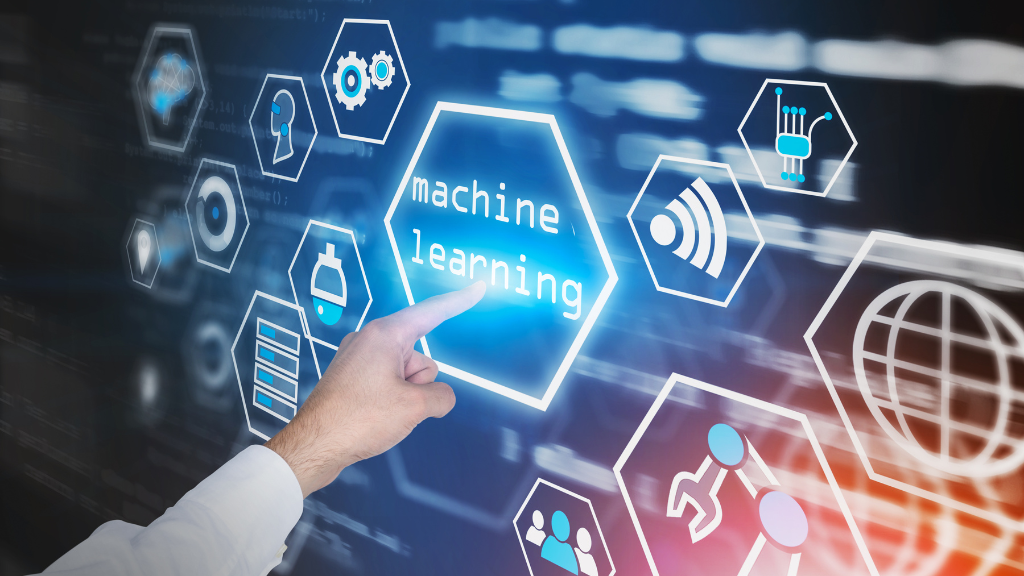Machine learning has emerged as a powerful field that combines computer science and statistics to enable computers to learn from data and make divinations or choices. Whether you are new in this or have some programming experience, learning machine learning can open up opportunities.
In this guide, we will help you through how to learn machine learning and provide you with valuable resources to get started. So, let’s dive in!
What is Machine Learning?

Before we delve into the details, let’s understand what machine learning is all about. Machine learning is a subsection of artificial intelligence AI that focuses on making algorithms and models based on data. It enables computers to recognize patterns, extract insights, and automate tasks without being explicitly programmed.
Machine learning algorithms make large-scale data analysis and interpretation possible, enabling computers to spot patterns, anticipate the future, and act. These algorithms can be categorized into supervised, unsupervised, and reinforcement learning, each serving different purposes.
Supervised learning involves training a model using labeled data, while unsupervised learning explores unlabeled data to discover patterns. Reinforcement learning involves training agents to take action in an environment to maximize rewards.
Machine learning rapidly transforms various industries, including healthcare, finance, e-commerce, and more. By acquiring machine learning skills, you can gain a competitive edge in the job area and contribute to groundbreaking advancements. With the increasing demand for professionals who can develop and deploy machine learning solutions, learning this field can lead to rewarding career opportunities.
How to Learn Machine Learning?
If you have an interest in ML, can I learn machine learning on my own and search for machine learning for beginners? Here is your guide on how to learn AI machine learning step by step. To start your journey in machine learning, it’s essential to understand the basics and acquire the necessary knowledge and skills. Let’s explore the key steps to start:
Understanding the Basics
Begin by familiarizing yourself with the fundamental concepts of machine learning, like supervised learning, unsupervised learning, regression, classification, and clustering. Gain insights into how algorithms work, how models are trained, and how predictions are made.
Mathematics for Machine Learning

A solid understanding of mathematics is crucial in machine learning. Concepts like linear algebra, calculus, probability, and statistics play an important part in designing and implementing machine learning algorithms. Dedicate time to learning these mathematical foundations to enhance your understanding and proficiency in the field.
Programming Languages for Machine Learning
Python is the most popular programming language for machine learning due to its simplicity, versatility, and rich ecosystem of libraries. Start by learning Python and popular machine learning libraries like TensorFlow, PyTorch, and Scikit-learn.
These libraries provide powerful tools and frameworks to efficiently build and train machine learning models.
Choosing the Right Tools and Frameworks
There are numerous tools and frameworks available for machine learning. Depending on your specific requirements and projects, choose the ones that align with your goals. Explore popular frameworks like TensorFlow, PyTorch, and Keras, and leverage tools like Jupyter Notebooks for interactive coding and data exploration.
Exploring Different Machine Learning Algorithms
Machine learning encompasses many algorithms, including linear regression, logistic regression, decision trees, support vector machines, random forests, and neural networks.
Dive into each algorithm to understand its underlying principles, advantages, and limitations. Hands-on practice with real-world datasets will help solidify your understanding.
Collecting and Preparing Data
Data is the fuel for machine learning models. Learn techniques for collecting, cleaning, and preprocessing data to ensure its quality and suitability for training models. Data preprocessing steps like feature scaling, handling missing values, and feature engineering are essential for model performance.
Training and Evaluating Machine Learning Models
Learn how to split datasets into training and testing sets to assess model performance accurately. Train your models using appropriate algorithms and evaluate their accuracy, precision, recall, and other performance metrics. Gain insights into techniques like cross-validation and hyperparameter tuning to optimize model performance.
Deep Learning and Neural Networks
Deep learning is a subpart of machine learning that emphasizes on training neural networks with multiple layers to solve complex problems. Dive into deep learning architectures like convolutional neural networks (CNNs) and recurrent neural networks (RNNs). Understand how to leverage pre-trained models and transfer learning for efficiency.
Applying Machine Learning in Real-World Scenarios
Explore real-world machine learning applications across various industries, such as image recognition, natural language processing, fraud detection, recommendation systems, and autonomous vehicles. Engage in practical projects and Kaggle competitions to apply your knowledge and gain hands-on experience.
Resources for Learning Machine Learning

To deepen your understanding and stay updated with the latest advancements in machine learning, here are some valuable resources:
- Online course and training for machine learning: Platforms like Coursera, Udacity, and edX offer comprehensive courses on machine learning taught by industry experts.
- Books: “Hands-On Machine Learning with Scikit-Learn, Keras, and TensorFlow” by Aurélien Géron and “Pattern Recognition and Machine Learning” by Christopher M. Bishop are highly recommended.
- Kaggle: Participate in Kaggle competitions and explore datasets and kernels shared by the community.
- Online communities: Join machine learning communities on platforms like Reddit, Stack Exchange, and GitHub to engage with experts and enthusiasts.
- Blogs and podcasts: Follow popular machine learning blogs and podcasts to stay informed about the latest research, techniques, and trends.
Conclusion
Learning machine learning is an exciting and rewarding journey that can open up opportunities. You can become proficient in this rapidly evolving field by understanding fundamental concepts, mastering programming languages, exploring different algorithms, and gaining hands-on experience.
The need for machine learning professionals is continuously increasing, and by acquiring these skills, you can position yourself for a successful and rewarding career. However, it’s important to note that cybersecurity becomes a crucial aspect to consider as you dive into machine learning.
In today’s digital landscape, protecting data and ensuring the integrity of machine learning systems is paramount. This is where cybersecurity firms like NextDoorSec can play a pivotal role in helping you.






0 Comments